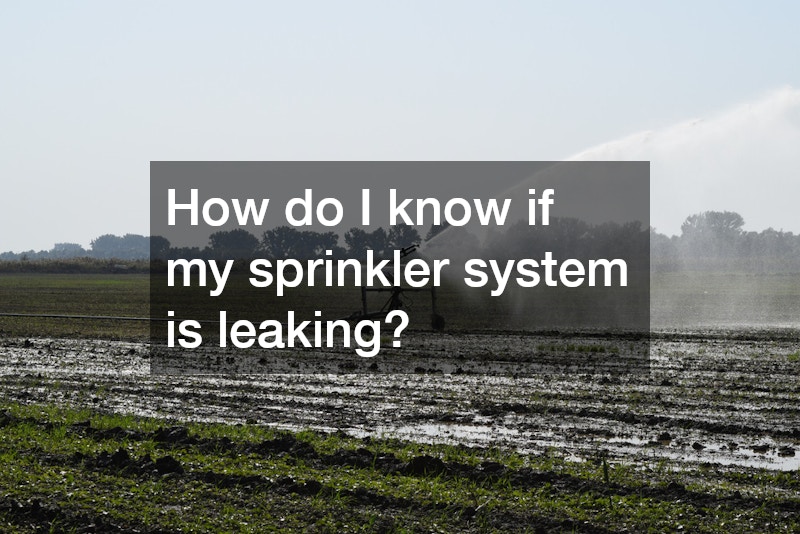Sprinkler systems are essential for maintaining a healthy and vibrant lawn. However, like any mechanical system, they can develop problems over time. In this article, we’ll explore the top signs indicating that your sprinkler system might need repairs and provide guidance on what you can do to address these issues.
1. How do I know if my sprinkler system is leaking?
If your water bills have unexpectedly increased, it could be a sign of a leak in your sprinkler system. A sudden spike in water usage typically points to an inefficiency within the system.
By regularly monitoring your water bills, you can quickly detect when there’s a deviation from the norm.
Once a leak is suspected due to high water bills, a thorough inspection of your sprinkler system should follow. Check for obvious signs of water pooling or excessive moisture. In many cases, a professional assessment may be required to pinpoint the exact location and cause of the leak.
Wet or soggy spots in the lawn that don’t dry out could indicate underground leaks. If left unaddressed, these persistent damp areas can eventually lead to lawn damage. The presence of moss or mold in these spots further confirms the chronic moisture issue.
Underground leaks are often harder to detect and require keen observation and technical expertise. If these spots coincide with the layout of your sprinkler lines, it strongly suggests a leakage is present. Maintenance checks should include probing these areas to trace the source of the moisture.
To manage this issue effectively, it’s advisable to contact a professional sprinkler system repair service. They have tools such as listening devices and soil probes that are designed to accurately detect and repair leaks underground. An experienced technician can help avert further landscape damage and ensure optimal system performance.
Reduced water pressure at sprinkler heads can indicate a leak compromising the system’s efficiency. In many cases, this occurs alongside a leak in the pipe fittings or a malfunction within the valves. This pressure disparity results in inconsistent water distribution across your lawn.
Correcting water pressure issues is vital not only for proper irrigation but also for prolonging the life of your sprinkler components. Sprinkler heads may not reach their intended spray range, leading to dry patches in the yard. Inspecting individual components such as filters, pressure regulators, and valves should be part of regular maintenance.
2. Why are some areas of my lawn not getting water?
Dirt and debris can block sprinkler heads, preventing water from reaching certain areas. When this happens, parts of your lawn can become dry and unhealthy. Ensuring that each sprinkler head is free from obstruction is key to maintaining a lush lawn.
Regular cleaning of sprinkler heads can reduce the buildup of clogging materials. A simple rinse or brush can often remove the physical barriers impeding water flow. Additionally, incorporating a regular cleaning routine into your lawn maintenance can drastically enhance your sprinkler system’s efficiency.
When addressing clogged heads, it may also be beneficial to examine the filters and screens within the system. Over time, these can accumulate grime and affect performance. Maintenance should therefore be holistic, encompassing both sprinkler heads and internal components for maximum effectiveness.
3. What should I do if my sprinkler system isn’t turning on?
Check for disconnected wires or issues with the control panel that might prevent activation. Electrical faults are a common cause of a non-functional sprinkler system. Ensuring proper connection and operational condition of all electrical components can mitigate most problems.
Inspecting the control panel for any signs of wear or damage should be a foundational step. Any signs of corrosion or burnt wires will necessitate immediate attention. A multimeter can be a handy tool to check for live currents and ensure continuity in wiring.
If you’re not comfortable handling electrical components, consult an electrician. They can perform a thorough inspection and quick repairs to restore functionality to your system. Always prioritize safety by ensuring power is off during any testing or repairs.
Recognizing the signs that your sprinkler system needs repair can save water, reduce costs, and ensure your lawn stays healthy. By addressing issues such as leaks, uneven coverage, or failure to turn on promptly, you can maintain an efficient and effective irrigation system. Regular maintenance and timely repairs will help keep your system running smoothly for years to come.





